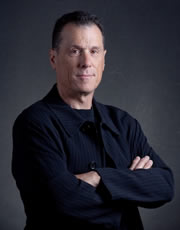 As the 21st century progresses, the narrative that we are telling in our teaching and mentoring gets more crowded. Movements come and go more quickly, the politics of the era become increasingly more complex, information flows more quickly (there is simply more of it) and we hurtle toward becoming a globally connected society, a world culture in which the nature of art is in constant flux. There are significantly more voices vying for our attention as we become a more inclusive art world, a polyvocal, multicultural, gender equitable, racially diverse and culturally sensitive art world. Art becomes more intertwined with both esthetic/philosophal concerns and with the politics of the era as well, as artists seek as always, to make meaning out of all that is life.
As the 21st century progresses, the narrative that we are telling in our teaching and mentoring gets more crowded. Movements come and go more quickly, the politics of the era become increasingly more complex, information flows more quickly (there is simply more of it) and we hurtle toward becoming a globally connected society, a world culture in which the nature of art is in constant flux. There are significantly more voices vying for our attention as we become a more inclusive art world, a polyvocal, multicultural, gender equitable, racially diverse and culturally sensitive art world. Art becomes more intertwined with both esthetic/philosophal concerns and with the politics of the era as well, as artists seek as always, to make meaning out of all that is life.
And we are moving toward radically new models of artistic practice while trying to honor all that has come before this moment. Such transitions are gradual and evolutionary; they often are fraught with tension and a sense of loss.
I notice, as we move forward in this story, that we are often speaking about art made by women, by outsiders and by artists who, rather than occupying a space in the art world via inheritance, by the privilege of gender or class, occupy that space by some kind of force or will. Artists for whom participating in the discourse of contemporary art is more a matter of life and death than a matter of commerce, more a matter of political commitment than of esthetic or formal concerns. In the class I am teaching this semester, we have talked a lot about feminist art (of the early 1970’s) and its resonance for artists who were able to work in the kind of conceptual spaces that Feminism created; spaces in which art could wander across borders of content and ideology, form and function and back again, all the while allowing for the idiosyncrasy of the artist’s life to be front and center in the work.
This is not to say that Feminism (or feminist art practice) made it possible for all voices to be heard, however, subsequent to the early days of feminism, artists of color, women and other underrepresented groups begin to find their voices and to speak in new ways, in side of rather than outside of the community of the art world and beyond. It is undeniable that there is a causal relationship; the avant-garde always creates breaches in the wall of resistance that others may find their way through.
Part of what feminist art and the movement offered to the art world was that art was a fluid construction of circumstance, history, access, material and personal expression. Such ideas were most certainly evolving in the years prior to 1971, when Miriam Schapiro and Judy Chicago co-founded the first Feminist Art Program, at the California Institute of the Arts, in Valencia. However, it is moments such as these that crystallize a movement and catalyze new paradigms for artists and others.
The artist and writer Mira Schor wrote. “Permissions stemming from…[the] movements’ aesthetics and politics continue to influence artists today, even if they don’t know it.”
Given the opportunity to share one’s thoughts in a forum such as this, it is hard not to write something about being thankful at this time of year. I am thankful for the life-work of Miriam Shapiro, a leader of the Feminist art movement, who died earlier this year at 91.
Best,
Douglas Rosenberg
Chair, Art Department
